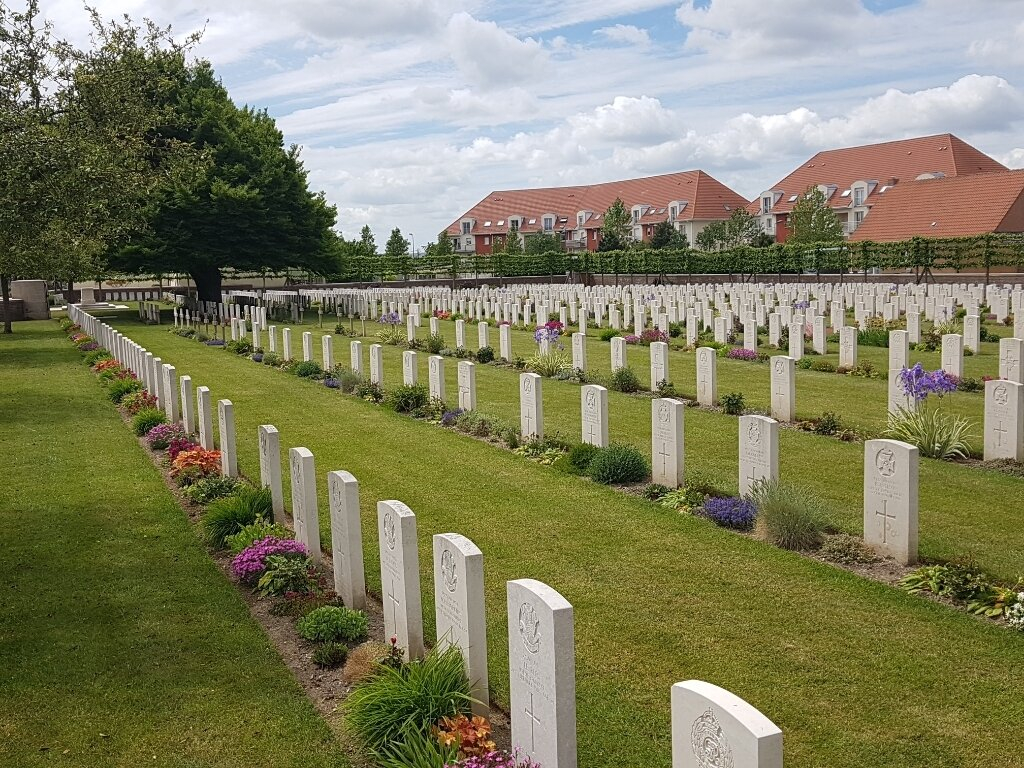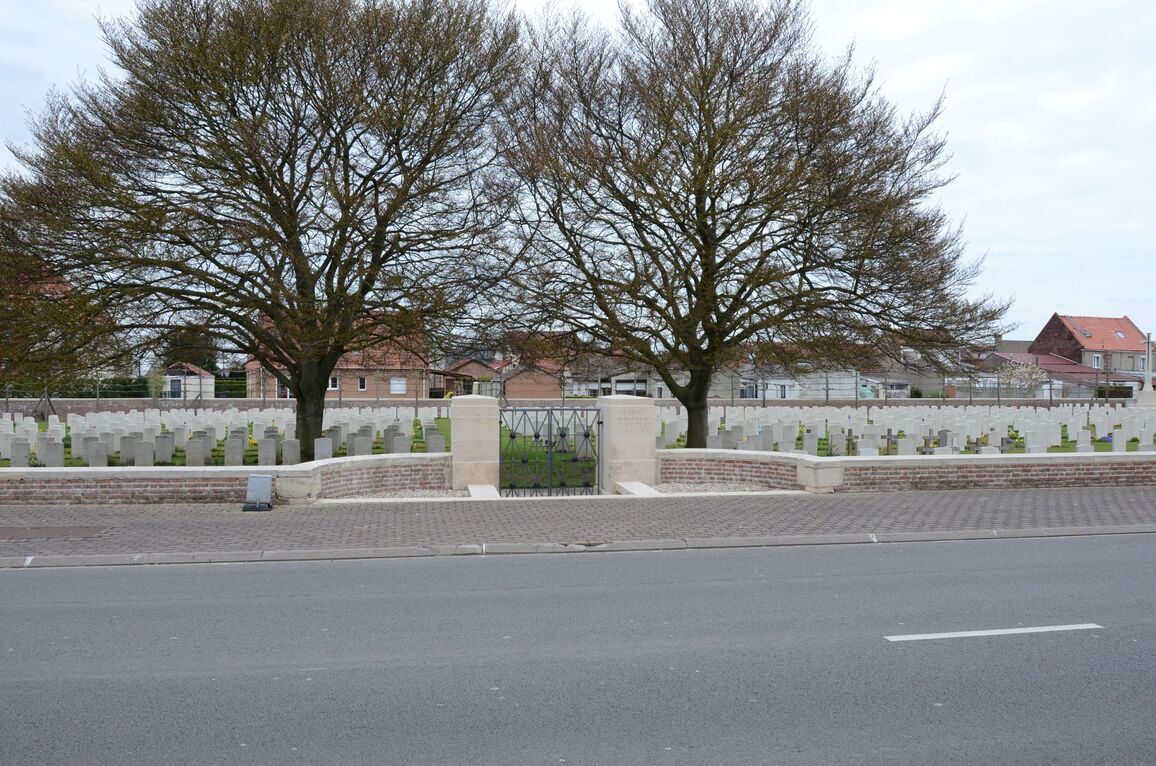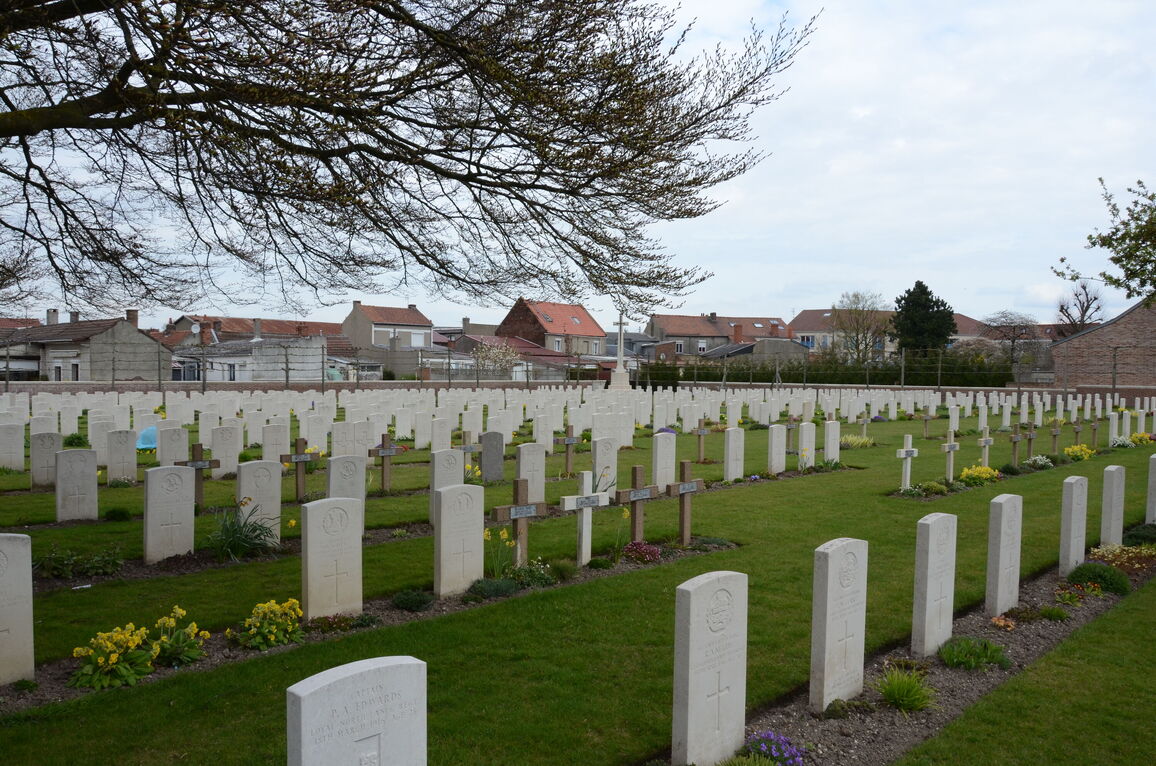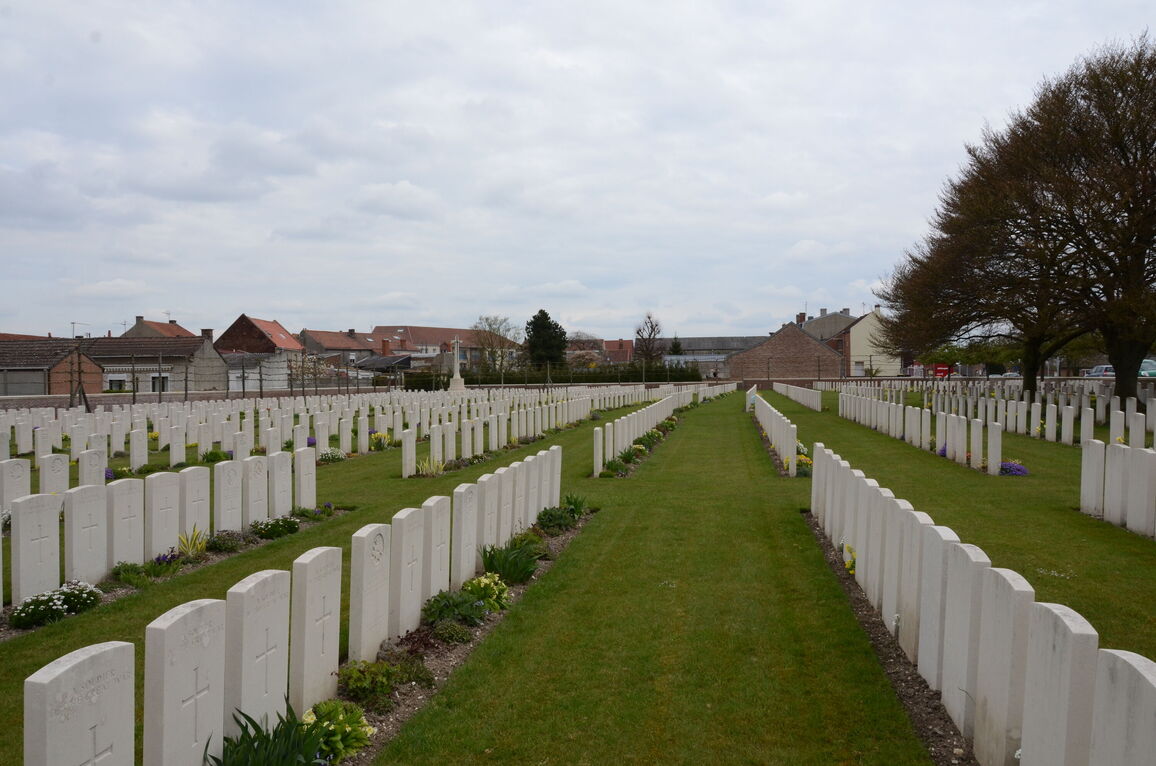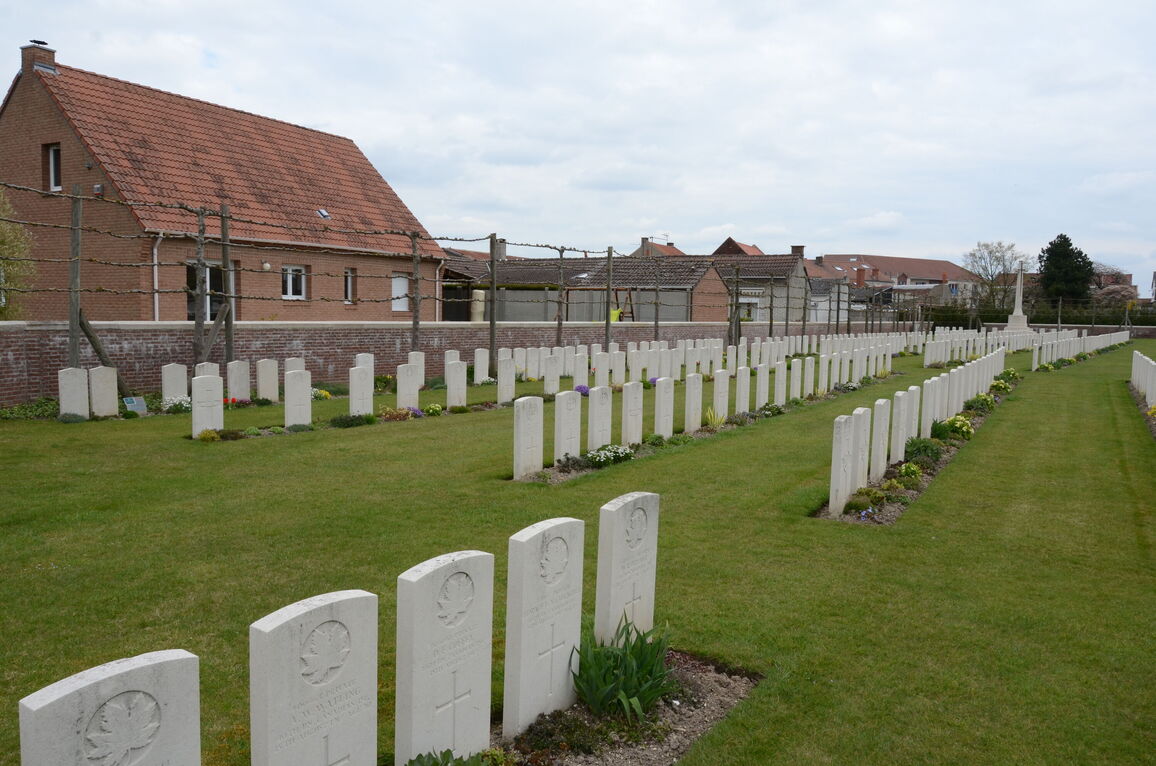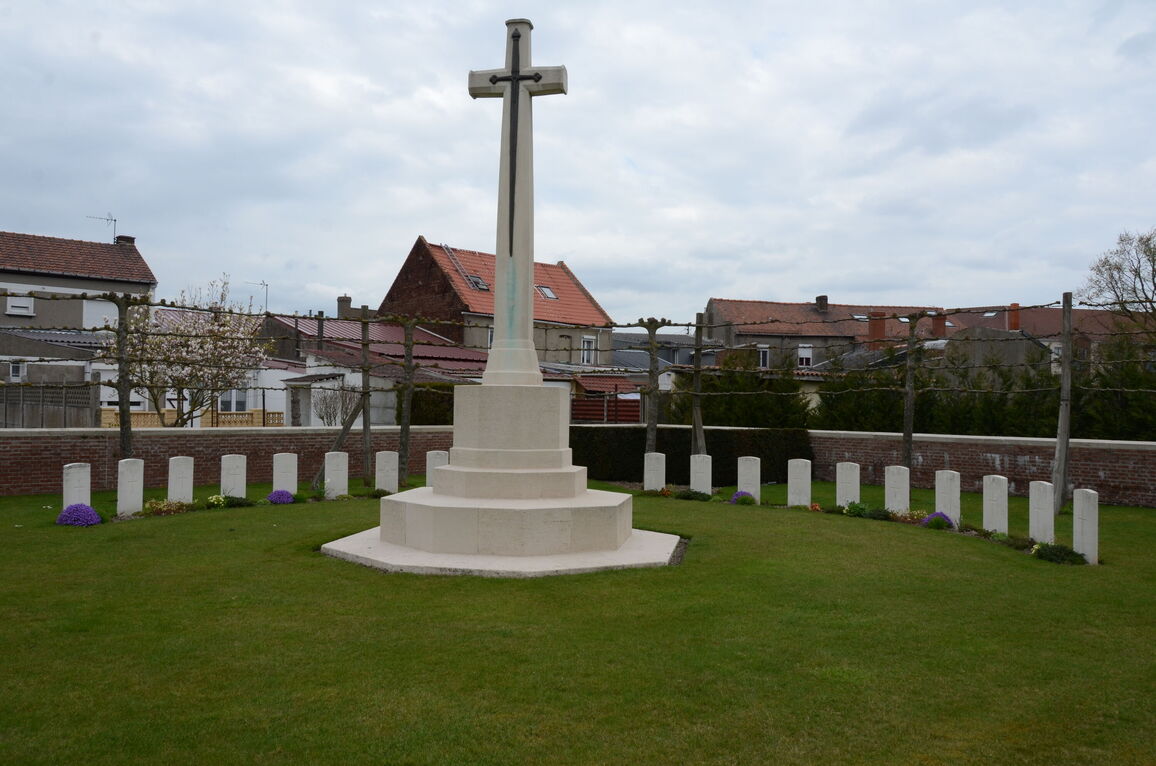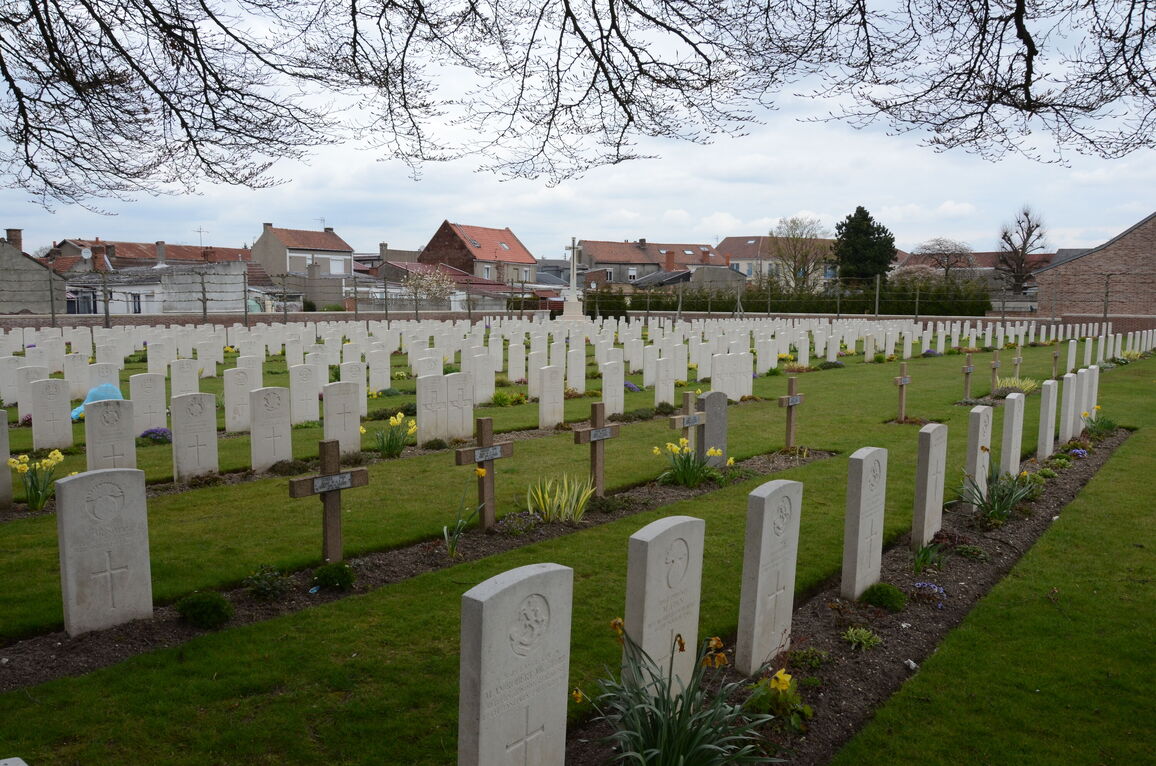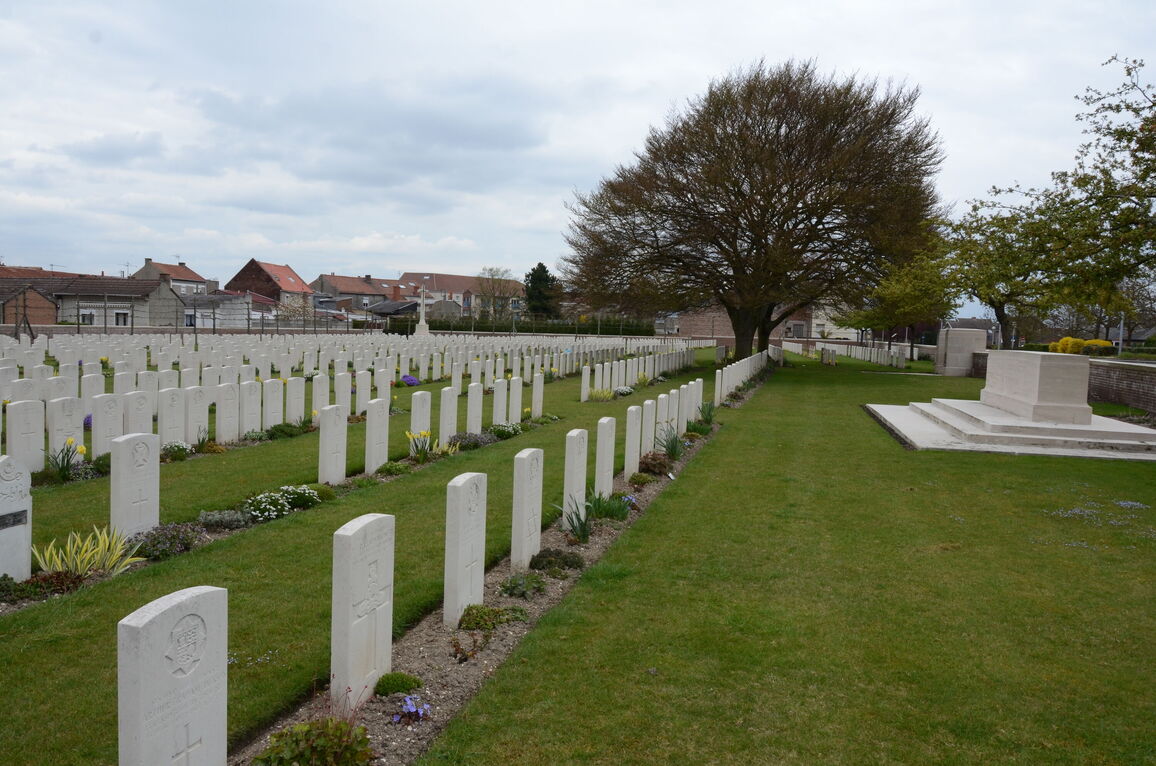Maroc British Cemetery, Grenay
- Country France
- Total identified casualties 1124 Find these casualties
- Region Pas de Calais
- Identified casualties from First World War
- GPS Coordinates Latitude: 50.44729, Longitude: 2.74738
Location information
Maroc British Cemetery is located in the village of Grenay, which is about 15 kilometres south-east of Bethune. From Lens take the N43 towards Bethune. After Loos-en-Gohelle turn left (after the petrol station) and continue straight on. The Cemetery is a few kilometres on the right side of the road, in the village.
Visiting information
ARRIVAL
The cemetery is signposted.
PARKING
It is possible to park at the side of the main road, D165, along the front boundary wall of the cemetery. Parking is available on both sides of the road, with pedestrian crosswalks located along the road.
The ground is flat and firm, with tarmac and brick paving. There is a concrete drainage culvert between the road and the parking area and footpath.
There is also car park to the east of the cemetery in front of a residential area, where there are multiple parking spaces. The car park is approximately 150 metres from the main entrance.
ACCESS LAYOUT AND MAIN ENTRANCE
The main entrance gate is in the centre of the perimeter wall on the side of the main road.
The main gate is an ornamental, black metal gate, approximately 1.2 metres tall, in the centre of a semi-circular alcove, down 4 stone steps from the ground level of the main road. The two-section gate is 1.50 metres wide, with the opening latch and handle on the right side of the gate. The left side section can be opened with a vertical latch close to ground level. There is a metal gate stop in the centre of the entrance. The gate opens inwards to a paved area level with the grass inside the cemetery.
To the left of the main entrance is the Stone of Remembrance.
The Cross of Sacrifice is in the rear right-hand corner of the cemetery.
The Register Box is inside the main entrance, mounted onto the right-side stone column, viewed from inside the cemetery.
There is no seating in the cemetery.
All the internal cemetery paths are grass, the ground is flat and firm.
ALTERNATIVE ACCESS
To the far right of main entrance to the cemetery is a service entrance with a two- leaf black metal gate. The gate is over 2 metres wide with two opening sections. There is a sliding latch in centre of right-hand side. The gate opens into the cemetery.
The entrance allows unrestricted access into the burial area from the pavement onto grass.
ADDITIONAL INFORMATION
The cemetery is permanently open.
History information
The cemetery was begun by French troops in August 1915, but it was first used as a Commonwealth cemetery by the 47th (London) Division in January 1916. During the greater part of the war it was a front-line cemetery used by fighting units and field ambulances, and protected from German observation by a slight rise in the ground. Plot II was begun in April 1917 by the 46th (North Midland) Division and by the middle of October 1918, Plot III, Row A and part of Row B, had been filled. The remainder of Plot III, and the ends of certain rows in Plot I, contain graves brought in after the Armistice from the battlefields and small cemeteries (including Maroc Churchyard), north and east of Grenay.
Maroc British Cemetery now contains 1,379 Commonwealth burials and commemorations of the First World War. 264 of the burials are unidentified but there are special memorials to 89 casualties known to be buried among them. In particular, 87 officers and men of the 6th London Regiment, who died on 25 September 1915 in the capture of Loos, are now buried (but without individual identification) in Plot III, Rows H, J, K and L. The cemetery also contains 45 French and German burials.
The cemetery was designed by Sir Herbert Baker.


